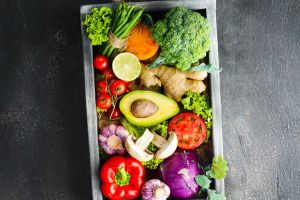We all know vegetables are good for us—but sometimes, they feel a bit boring on the plate. Have you ever wondered why some veggies taste amazing while others just seem bland or overcooked?
The secret often lies in how we cook them. Today, we're going to explore the best cooking methods for different vegetables, so we can enjoy their natural flavors, textures, and nutrients to the fullest.
Broccoli: Lightly Steam or Roast
Broccoli is full of fiber and vitamin C, but it can lose its appeal quickly if overcooked. We've found that light steaming keeps it bright green and slightly crisp, which many people prefer. For more flavor, roasting with a drizzle of olive oil and a pinch of salt brings out a nutty taste. Avoid boiling it for too long—it turns mushy and bitter.
Carrots: Roast or Sauté
Carrots have natural sweetness, and we can enhance that through roasting. Roasted carrots develop caramelized edges and a deep flavor. For quick meals, sautéing thin carrot slices with garlic or herbs works well too. While boiling is an option, it tends to make them soft and less flavorful unless used in soups or stews.
Spinach: Quick Sauté or Steam
We don't need much time with spinach—it wilts in seconds. A quick sauté with garlic and a splash of olive oil is our go-to. This keeps the flavor light and fresh. Steaming is also a good method, especially when we're mixing it into pasta or rice dishes. Be sure not to overcook—it shrinks quickly and can turn slimy.
Cauliflower: Roast for Best Results
Roasted cauliflower is a game changer. It turns crispy on the outside and soft inside, with a naturally sweet and nutty flavor. We suggest tossing it with oil and your favorite spices, then roasting at high heat. Steaming is fine for mashing, but we avoid boiling unless it's going into a blended soup.
Green Beans: Blanch and Sauté
For green beans, we like to blanch them briefly in hot water, then quickly sauté with garlic or sesame oil. This keeps their crunch while adding flavor. Overcooking can turn them dull and mushy, so timing is everything. If you prefer them soft, a short steam can work too.
Eggplant: Grill or Bake
Eggplant soaks up flavors beautifully. Grilling brings out its smoky side, while baking makes it tender without being greasy. We recommend slicing it, brushing it with oil, and roasting or grilling until golden. Avoid frying if you're trying to reduce oil intake—it can absorb a lot of it.
Zucchini: Pan-Fry or Grill
Zucchini has a mild taste and high water content. We find pan-frying over medium heat gives it a slightly crispy outside, while grilling adds a charred flavor that's hard to beat. Avoid boiling—it turns soggy very fast. A light sprinkle of salt helps draw out excess moisture before cooking.
Bell Peppers: Roast or Sauté
Bell peppers shine when they're roasted until their skins blister—this brings out their sweetness and softens their texture. Sautéing also keeps their vibrant color and adds flavor quickly. We love using them in stir-fries, sandwiches, or simply as a side dish with a bit of balsamic vinegar.
Tomatoes: Bake or Simmer
Fresh tomatoes are great raw, but for cooking, slow baking or simmering helps concentrate their flavors. We often use baked tomatoes in sauces or pasta dishes. Sautéing cherry tomatoes with garlic can turn them into a quick sauce or warm salad topping.
Cabbage: Stir-Fry or Braise
Cabbage can be surprisingly tasty when cooked right. We enjoy it most when it's stir-fried until slightly crispy, or braised slowly with a bit of vinegar or spices. These methods soften its strong flavor and make it more appealing. Overboiling can give it an unpleasant smell, so we avoid that.
Let's Eat Smarter, Together!
Cooking vegetables the right way makes a big difference in both taste and nutrition.
According to Dr. Jeffrey Blumberg, a specialist in nutritional biochemistry:
"Gentle cooking methods—such as steaming and roasting—minimize thermal degradation and leaching of water-sensitive antioxidants like vitamin C and B-complex vitamins. Simultaneously, incorporating herbs and spices not only enhances flavor without heavy sauces but also boosts the bioactive compound profile of meals.
For instance, culinary doses of oregano or turmeric add polyphenols that synergize with vegetables' native nutrients, creating a matrix of health benefits far greater than raw or aggressively cooked produce."
We'd love to hear from you—what's your favorite way to cook your veggies? Have you tried roasting cauliflower or grilling eggplant? Share your tips or kitchen experiments with us!
Let's keep making vegetables exciting, delicious, and part of every meal we enjoy.


